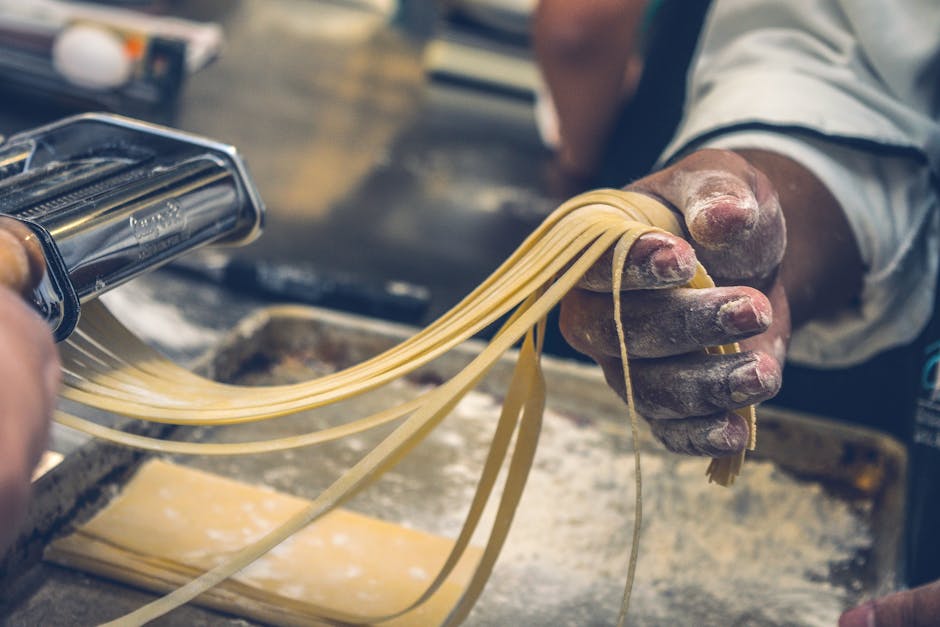Unveiling the Secrets to Making Perfect Risotto
When it comes to comfort food that is both creamy and flavorful, few dishes can rival the classic Italian risotto. The velvety texture, rich taste, and versatility of risotto have made it a favorite among food enthusiasts worldwide. However, achieving the perfect consistency and flavor of this dish can be a daunting task for many home cooks. Fear not, as we are here to unravel the secrets to making the perfect risotto. Join us on a culinary journey as we delve into the nuances and techniques that will elevate your risotto game to new heights.
The Importance of Quality Ingredients

As with any dish, the quality of the ingredients you use plays a crucial role in the final outcome of your risotto. When it comes to making the perfect risotto, it all starts with the rice. Arborio, Carnaroli, or Vialone Nano are the preferred varieties due to their high starch content, which gives risotto its signature creamy texture. Additionally, using homemade or high-quality broth, fresh herbs, and good quality cheese can elevate the flavor profile of your risotto. Remember, simplicity is key when it comes to ingredients; let the natural flavors shine through.
The Technique: Patience is Key

One of the secrets to making perfect risotto lies in the cooking technique. The key to achieving that creamy consistency is to gradually add warm broth to the rice, allowing it to absorb the liquid slowly. This process of adding broth ladle by ladle and stirring continuously helps release the starch from the rice, creating a luscious, creamy texture. It’s essential to be patient and not rush this process; the gradual addition of broth and constant stirring is what sets a mediocre risotto apart from a perfect one.
Proper Heat Distribution

Another crucial factor in making the perfect risotto is ensuring proper heat distribution during the cooking process. Use a heavy-bottomed pan or pot to prevent the rice from sticking or burning. Maintaining a consistent temperature and stirring the rice regularly helps prevent uneven cooking and ensures that each grain is cooked to perfection. The heat should be low to medium throughout the cooking process to allow the rice to absorb the broth gradually and release its starch.
Adding Flavor in Layers

While the simplicity of risotto is part of its charm, adding flavor in layers can take your dish to the next level. Start by sauting aromatics such as onions, garlic, and shallots in butter or olive oil before adding the rice. This step helps build a flavorful base for your risotto. Experiment with different ingredients like mushrooms, seafood, or seasonal vegetables to add depth and complexity to your dish. Remember to season your risotto thoughtfully with salt and pepper, tasting as you go to adjust the seasoning accordingly.
The Final Touch: The Mantecatura
One of the secrets to achieving the perfect creamy consistency in risotto is the final step known as the mantecatura. This process involves adding a knob of butter and a generous amount of grated cheese, typically Parmigiano Reggiano or Grana Padano, to the risotto once it’s off the heat. Stir vigorously to emulsify the butter and cheese into the risotto, creating a silky, luxurious finish. The mantecatura not only adds richness and depth of flavor but also helps bind the dish together, resulting in a velvety texture that is characteristic of a perfect risotto.
Common Misconceptions About Making Risotto
One common misconception about making risotto is that it requires constant stirring. While it’s true that risotto benefits from regular stirring to release the starch from the rice, it doesn’t need to be stirred non-stop. Stirring every minute or so is sufficient to achieve the desired creaminess without tiring yourself out. Another misconception is that risotto should be served al dente like pasta. In reality, risotto should have a creamy, slightly loose consistency, with the rice grains cooked through but still retaining a slight bite.
FAQs About Making Perfect Risotto
Q: Can I use any type of rice to make risotto?
A: While Arborio, Carnaroli, and Vialone Nano are the most commonly used varieties for making risotto, you can experiment with other short-grain rice varieties, such as sushi rice or Calrose rice, to achieve a similar creamy texture.
Q: How do I know when my risotto is done?
A: The best way to determine if your risotto is ready is by tasting it. The rice should be cooked through but still have a slight bite to it. The consistency should be creamy, and the grains should not be mushy.
Conclusion
To wrap things up, mastering the art of making perfect risotto requires a combination of quality ingredients, patience, technique, and attention to detail. By understanding the secrets and techniques outlined in this article, you can elevate your risotto game and impress your family and friends with a dish that is both comforting and delicious. Remember, practice makes perfect, so don’t be afraid to experiment with different flavors and ingredients to create your signature risotto masterpiece. Bon apptit!




